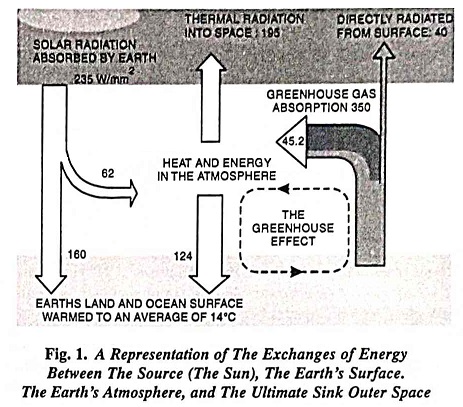Environmental aspects of Electric Energy Generation Interview Questions and Answers:
1. Name various stack emissions.
Ans. Thermal power plants using fossil fuels emit large amount of harmful gases such as SO2, nitrogen oxides (NOx), CO, CO2, certain hydrocarbons and particulates.
2. What are particulates ? What are their harmful effects ?
Ans. Particulates are small particles that are emitted from stacks of coal-fired plants. Particulates affect the health of humans. They are responsible for diseases such as bronchitis, respiratory diseases and excessive death rate.
3. What are various cooling tower impacts ?
Ans. Various cooling tower impacts are : (i) Drift deposits, (ii) Fog and (iii) Visible plumes.
4. What are the aquatic impacts of pollution ?
Ans. Aquatic impacts of pollution are :
(i) Thermal effects, (ii) Chemical contamination, (iii) Entrapment, (iv) Entrainment, (v) Miscellaneous effects like decrease of oxygen in water.
5. Explain interdependence of energy and environment.
Ans. Energy and environment are interrelated. A healthy environment would lead to more sources of energy. On the other hand the non-polluting sources of energy lead to healthy environments.
6. Enumerate social and economic impacts of power plants.
Ans. The social and economic impacts of power plants are: (i) Demographic impacts, (ii) Land use impacts, (iii) Housing impacts, (iv) Public services, (v) Change in community structure. (vi) Psychological impacts, (vii) Economic impacts, (viii) Recreational and cultural impacts, (ix) Political impacts.
7. What is greenhouse effect ?
Ans. The greenhouse effect is a process by which thermal radiation from a planetary surface is absorbed by atmospheric greenhouse gases and is re-radiated in all directions. Since part of this re-radiation is back towards the surface, energy is transferred to the surface and the lower atmosphere. As a result, the temperature there is higher than it would be if direct heating by solar radiation were the only warming mechanism.
Solar radiation at the high frequencies of visible light passes through the atmosphere to warm the planetary surface, which then emits this energy at the lower frequencies of infrared thermal radiation. Infrared radiation is absorbed by greenhouse gases, which in turn re-radiate much of the energy to the surface and lower atmosphere. The mechanism is named after the effect of solar radiation passing through glass and warming a greenhouse, but the way it retains heat is fundamentally different as a greenhouse works by reducing air flow, isolating the warm air inside the structure so that heat is not lost by convection.
The greenhouse effect was discovered by French mathematician Joseph Fourier in 1824, first reliably experimented on by Irish physicist John Tyndall in 1858, and first reported quantitatively, by the Swedish scientist Svante Arrhenius in 1896.
If an ideal thermally conductive blackbody was at the same distance from the Sun as the Earth is, it would have a temperature of about 5.3°C, However, since the earth reflects about 30% (or 28%) of the incoming sunlight, the planet’s effective temperature (the temperature of a blackbody that would emit the same amount of radiation) is about -18°C or -19°C, about 33°C below the actual surface temperature of about 14°C or 15°C. The mechanism that produces this difference between the actual surface temperature and the effective temperature is due to the atmosphere and is known as the greenhouse effect.
Earth’s natural greenhouse effect makes life as we know it possible. However, human activities, primarily the burning of fossil fuels and clearing of forests, have greatly intensified the natural greenhouse effect, causing global warming.
The ability of the atmosphere to capture and recycle energy emitted by the Earth surface is the characteristic of the greenhouse effect.
By their percentage contribution to the greenhouse effect on Earth the four major gases are : Water vapour : 36-70%; CO2 : 9-26%; Methane : 4-9%, Ozone : 3-7%.
The major non-gas contributor to the Earth’s greenhouse effect, clouds also absorb and emit infrared radiation and thus have an effect on radiation properties of the atmosphere.
